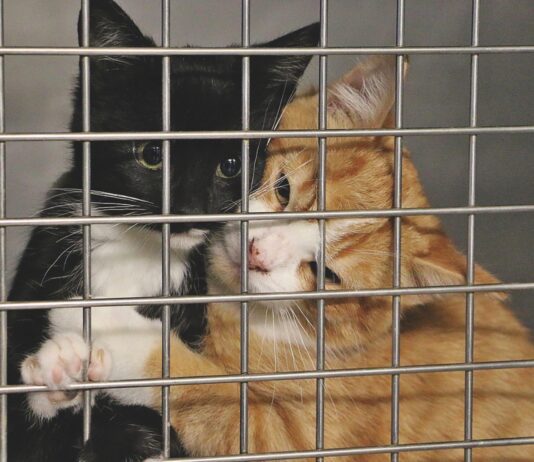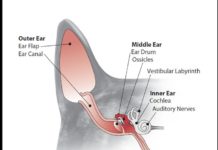The Deal With Oily Cat Fur
Your cat has always sported a shiny coat, soft to the touch. You marvel at the time he dedicates to grooming. But lately when you pet him, his coat feels greasy and you detect an odor. His grooming clearly is off, and its a worry.
Shelter Alternatives Can Save Cats’ Lives
A family member left the door open, and in a flash the cat ran outside where a dog attacked and badly injured him. His owner loved the cat but was out of work and had no money to take him to the veterinarian. She approached the shelter, sobbing, prepared to give up her cat to be euthanized. Then she met Lori Weise. "We can help you," Weise told her. "Well pay for your cat to get care." Weise is the founder of Downtown Dog Rescue (DDR), which despite its name, also helps cats. The organization helps low-income and homeless people in South Los Angeles care for and keep their pets.
In the News: Searching for Genetic Clues in Siamese and Related Breeds
Amyloidosis is found in Oriental shorthair, domestic shorthair, Siamese, Burmese and Abyssinian breeds. The disease develops when the abnormal protein amyloid, a fibrous substance, collects for unknown reasons in tissues and organs. The disease can become fatal if amyloid is deposited in the tissue of critical organs, such as the kidneys, liver or heart. The disease also affects humans.
Free Reign of the House and Stem Cell Research
A survey of more than 10,000 pet owners in 11 countries - 3,100 of them in the U.S. - has found that U.S. owners are the most passionate about their cats. In addition to the U.S., the renovation and design firm Houzz asked owners about pets in the home in Canada, France, Italy, Spain, Sweden, Denmark, Russia, Germany, Australia and Japan. Veterinarians frequently prescribe therapeutic diets and daily medication for cats with chronic enteropathy, a condition characterized by excessive loss of plasma proteins into the gastrointestinal tract. However, the regimen can have side effects, and some owners have difficulty complying with it.
Managing Diabetes Requires Dedication, but Long Life Is Possible
Q: My 11-year-old male domestic shorthaired cat has just been diagnosed with diabetes. I am feeling overwhelmed by the prospect of managing this condition and concerned for his well-being. Can you tell me a bit about this condition, his prognosis and how it can be managed?
Cats’ Behavior Affected Crucially Early in Life
Most of us recognize obvious signs of stress and anxiety in our cats - taking up residence under the bed being high on the list - but we may not be aware of more subtle signs, such as lowering the head and eyes, lifting a paw and staring at middle distance. These are among nearly 40 behaviors that may require intervention, according to the American Animal Hospital Associations 2015 Canine and Feline Behavior Management Guidelines, published this past summer. Behavioral problems affect more dogs and cats than any other medical condition and are one of the most common causes of euthanasia, relinquishment or abandonment of pets, the association says, adding that their management is essential in veterinary practice. It urges a culture of kindness that avoids the use of forced restraint.
6 Ways to Get Your Cat Off the Counter (And Other High Surfaces)
Your curious, agile cat effortlessly leaps and lands on the top of the refrigerator, deftly missing your glass serving bowl. Your first instinct may be to scold him, grab his front legs and oust him off the refrigerator. Such a response could bring you face to face with an angry, frightened cat who may lash out or bite you during the tussle. In your attempt to shoo your cat, he could also lose his balance, falling hard on the floor and injuring himself.
Stray Cats Outnumber People in Niagara
Niagara County SPCA in upstate New York calls itself the little shelter that could. It has a small staff of 19, a surgical trailer for sterilizations and a big population problem. Despite working with rescue groups and community cat caretakers, Executive Director Amy Lewis told WGRZ-TV in Buffalo that the city has 60,000 stray and feral cats compared to 50,000 people. As long as theyre not spayed or neutered, the number of homeless cats will keep increasing, she says. A lot of people dont spay and neuter - theres not low-cost, accessible spay-neuter programs for them. We do have one at the shelter, but we dont have the resources to accommodate large numbers of animals. The no-kill shelter sterilizes 40 to 50 cats a week but needs an in-house surgical suite to do more. Its board hopes to expand the facility or build a new one.
Understanding the Incidence of Deafness in White Cats
I am a breeder of Turkish Angoras, and recently Im seeing references stating that the incidence of deafness in white cats is 80 percent. This is much higher than the approximately 30 percent that we have seen in our breeding population. Can you shed some light on this discrepancy?
Finding Forever Homes at End of Their Journey
The Louisiana SPCA has found a novel solution to overpopulation at its New Orleans shelter. It sends dogs and cats to partner shelters miles away, where they can often be more quickly adopted. Its service is part of a small but growing trend in U.S. shelters and rescue organizations to save animals lives and find them forever homes.
Ask Elizabeth: June 2015
I recently adopted a beautiful kitty named Annie, and she has won my heart. Unfortunately after bringing Annie home, I discovered that she had some real neurological issues. She rocks back and forth and falls constantly when moving from room to room. Her veterinarian says that she has idiopathic [undetermined origin] vestibular syndrome. I do not think that she is going to get any better. Can you shed some light on this condition?
Ask Elizabeth: April 2015
I recently fostered a rescue dog I was told had eaten the feces of a feral cat while being housed in another foster home. This cat subsequently had his stool tested, and it came back positive for toxoplasma gondii. The dog unfortunately defecated in my car while I was transporting him and I am concerned that I may have been exposed to toxoplasma while cleaning up the mess in my car. Do I need to worry about this?
















